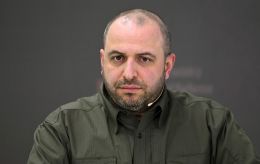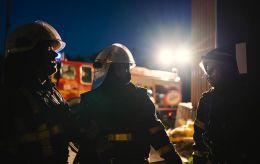From battlefield to homefront: What military, economic and energy challenges Ukraine faces this fall
 Autumn 2024 is preparing Ukrainians for new challenges related to the war and beyond (photo by Getty Images)
Autumn 2024 is preparing Ukrainians for new challenges related to the war and beyond (photo by Getty Images)
These challenges range from military threats, related to the operation in the Kursk region and the risk of losing territory in the East, to domestic issues, including economic and energy challenges due to the anticipated tax increases, rising prices, and problems with electricity supply. The main forecasts for fall 2024 are covered in this RBC-Ukraine article.
Contents:
- Kursk operation, the situation in the East, and potential breakthroughs on the frontline
- New taxes, price increases, and dollar exchange rate: What to expect in autumn
- Two months without blackouts: Most likely scenario of energy sector
- When the second Peace Summit will take place, expectations, and whether Russia will participate
Kursk operation, the situation in the East, and potential breakthroughs on the frontline
The offensive operation by the Armed Forces of Ukraine in the Kursk region has been ongoing for three weeks. During this time, they have advanced tens of kilometers, taking control of nearly 1,300 square kilometers of Russian territory and around one hundred settlements in four districts.
Since mid-August, a military commandant's office has been operating in Sudzha led by General Eduard Moskaliov. There are no plans for annexation, and according to President Volodymyr Zelenskyy, the goal is to create a buffer zone and secure the border areas.
How long the Kursk operation will last is unknown. It all depends on the plans of the General Staff and the Commander-in-Chief's Headquarters. The current breakthrough has demonstrated that Russia does not have inexhaustible reserves and will take time for them to regroup. The buffer zone will continue to expand, according to Oleksandr Musiienko, the Head of the Center of Military Law Researches.
"There is a struggle to expand westward in the Glushkovsky district and accordingly stretch it another 30-40 km. If this zone is established, it will last for a long time. I think the operation could last until the end of the year," he told RBC-Ukraine.
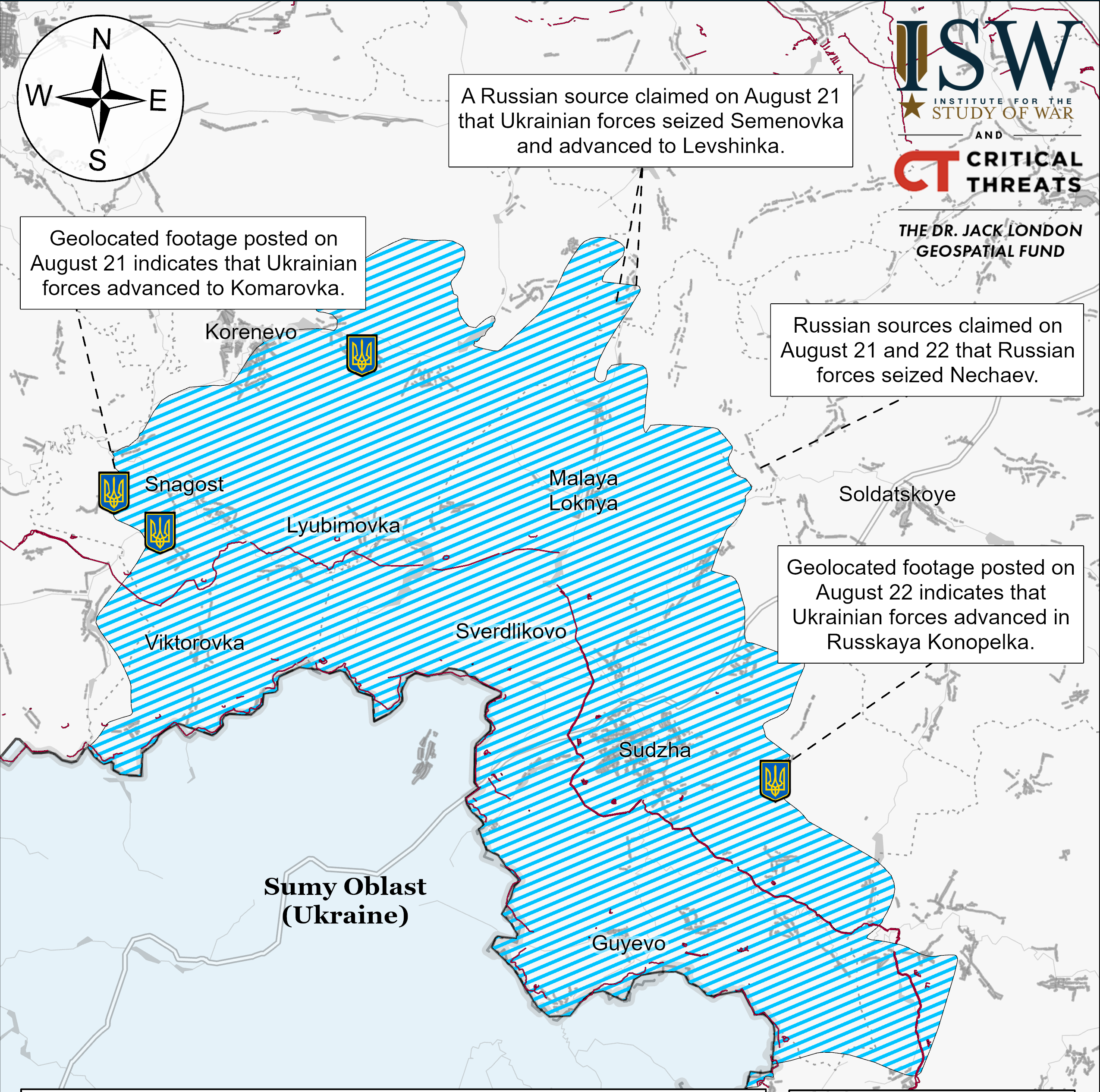
Buffer zone in the Kursk region (map by understandingwar.org)
One of the goals of the offensive is to draw Russian forces away from the East, particularly from the Pokrovsk and Toretsk directions. According to sources in the military-political leadership, Vladimir Putin has instructed that the Ukrainian Armed Forces be expelled from the Kursk region by October 1. However, this should not involve withdrawing troops from key areas. Some units have already been redeployed, and pressure on the Donbas is only intensifying.
This is because Pokrovsk and Toretsk are very important targets for the Russians, and they are not willing to exchange them, explains Roman Pogorily, co-founder of DeepState. "Even if they withdraw some brigade from there, no one will notice... They have almost reached Pokrovsk, are entering Toretsk, and will continue pressing. I want to believe in the Defense Forces, but at this pace, everything could collapse quickly," he said.
In the coming weeks, Ukraine will hold the defense on the approaches to the Myrnohrad-Pokrovske line. According to Musiienko, this is likely to be the final battle of fall 2024. Pokrovsk and Toretsk. I don't think they will be able to hold anything else. Judging by the losses they are incurring, they will need a pause. The active phase might last until October," he predicts.

Russians are approaching Pokrovsk and Myrnohrad and are already entering Toretsk (deepstatemap.live map)
Some Russian "Z-bloggers" believe the maneuver in Kursk could be a distraction before the main strike. In Russia, they are waiting for a breakthrough in the Zaporizhzhia region through Vasylivka, with an advance towards the nuclear power plant in Enerhodar and Tokmak. The direction is strategic, and it makes sense to work on it to split the enemy group. However, the question remains whether there are sufficient resources to do so.
"I would not rule out possible breakthroughs in the fall. The front is dynamic; we are advancing in the Kursk region and defending in the East. But the situation is constantly changing, and I would not rule out that Ukraine will seize any opportunity. There may be point operations until the end of the year, with a more significant one in the spring-summer of 2025," Musiienko says. As for the southern direction, in his opinion, "this option is not the most likely, other scenarios are possible."
In August, Ukraine received its first batch of F-16 fighter jets. Currently, the planes are being used in air defense mode, so there is no significant impact on the battlefield. However, targeted front-line operations may be carried out with a sufficient number in a specific area, says aviation expert Kostiantyn Kryvolap. But it is unlikely that this will become routine this fall or by the end of the year.
Along with the fighters, not only air-to-air missiles for air combat were delivered, but also anti-radiation missiles and guided bombs, notes expert Bogdan Dolintse, head of the Institute of Management and Strategies. "Based on this, we can say that the F-16s will begin performing tasks to destroy ground targets sooner or later. There is no point in stockpiling these munitions without using them, including from F-16s. So (strikes on ground targets) are a matter of time," he explained.
According to him, using the F-16s depends on the pilots' skills and whether there are safe zones for operation. "One of the first tasks will likely be seen in Crimea because, in recent months, the enemy's air defense there has been regularly suppressed," Dolintse added.
New taxes, price increases, and dollar exchange rate: What to expect in fall
This fall, price increases are expected, partly due to planned tax hikes. The Cabinet of Ministers has submitted budget amendments to increase military spending by 500 billion hryvnias. Nearly a quarter of this amount—about 139 billion—aims to be funded through a review of military taxes and excise duties.
The government's proposal includes a 1% tax on corporate income, 5% for individual entrepreneurs (IE) in Groups I, II, and IV, 1% for IE in Group III, 5% on bank metals, and 30% on jewelry. There are proposed 5% taxes on real estate sales, mobile service tariffs, and a 15% tax on car purchases. The proposal also includes an excise tax on water and reducing the duty-free threshold for parcels to zero (for orders from foreign online stores).
These tax initiatives have predictably sparked debate. In a comment to RBC-Ukraine, the Deputy Head of the Verkhovna Rada of Ukraine Committee on Financial Issues, Tax and Customs Policy, Yaroslav Zhelezniak, mentioned that the draft will change, and some norms, or most of them, are expected to take effect from October 1.
This week, the specific changes to the bill were revealed. The increase in the military tax rate from 1.5% to 5% remains; the military tax rate for IE in Groups I and II is set at 10% of the minimum wage; for IE in Group III, the rate is 1%. Monthly advance payments for gas stations are also retained.
Additionally, a 50% profit tax for banks in 2024 has been introduced, along with an increase in the profit tax rate for financial companies to 25% and monthly reports on personal income tax. The revised draft does not include an increase in VAT, a 1% turnover tax on business profits, or a luxury military tax.
The relevant committee is expected to review this draft tomorrow, and the first reading may take place during the next plenary week from September 3 to 5.
According to the National Bank's forecast, inflation will accelerate in the coming months but remain moderate. Doctor of Economic Sciences and Professor Oleksiy Plotnikov notes that prices will rise due to summer power outages when businesses operate on expensive generator power, face delivery issues, and have storage problems.
"All this leads to an increase in the cost of all elements and, accordingly, the price rises. As for September and the following months, inflation will increase, especially if the Verkhovna Rada passes the tax hikes. This also applies to fuel excises, tobacco excises, and the prospect of higher excises on sugary carbonated drinks," he said.
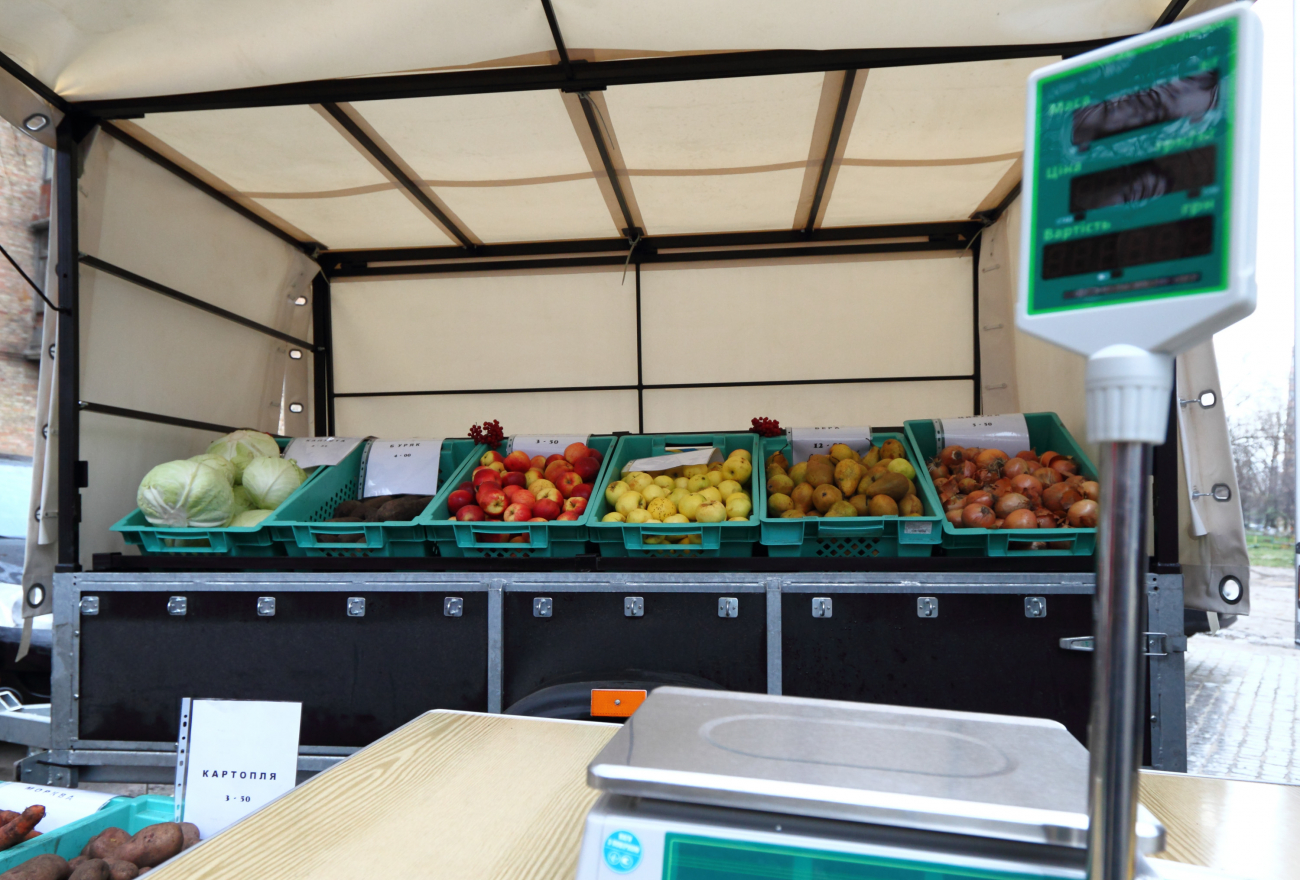
Prices, including for food, are expected to rise in the fall (photo by Vitalii Nosach/RBC-Ukraine)
Food prices are expected to rise starting in late September, and there are several reasons for this, notes analyst Maksym Hopka of the Ukrainian Agribusiness Club. Firstly, the rise in fuel prices will lead to higher logistics costs, and as the cold weather sets in, this fuel will be used in generators, increasing production costs.
Secondly, prices for raw materials for processing enterprises are expected to rise. For example, the purchase prices for milk have already increased by 30% compared to the same period in 2023. A similar situation is observed with grain crops, which have increased prices by an average of 20-30%.
Excise rates on gasoline, diesel, and automotive gas will increase from September 1. Fuel prices are expected to rise by an average of 9% by the end of the year. However, Serhiy Kuyun, director of the consulting company "A-95," is unsure whether diesel and gasoline prices will increase significantly—recently, procurement prices have been falling. As for liquefied gas, the excise will increase several times. "But even despite the price increase, liquefied gas will remain cost-effective compared to gasoline," he believes.
On the currency market, the situation will remain within August trends until early fall. As of September 1, the official exchange rate is expected to stabilize within the range of 41.4-41.6 UAH/USD, and the devaluation of the hryvnia compared to last month's figures will be 1.4%, says Taras Lesovyi, head of the treasury department at Globus Bank.
The National Bank emphasized in response to RBC-Ukraine that it will maintain an active presence on the interbank market to compensate for currency shortages and protect exchange rate dynamics from sharp fluctuations. In other words, the hryvnia's volatility will be moderate, and the exchange rate will continue to be controlled through currency sales.
Serhiy Fursa, Deputy Director of Securities Trading at Dragon Capital, stresses that the NBU will not allow the exchange rate to rise sharply.
"There won't be 45 hryvnias per dollar because the NBU is very cautious about this. Inflation and devaluation expectations are now picking up. The NBU cannot afford a significant movement. There is no course for devaluation. Our exchange rate fluctuations are very moderate. Can we reach 42 hryvnias by the end of the year? Of course, we can, but this is still within a 1-2% fluctuation, and there will be no large swings," he explained.
High rates of hryvnia depreciation are also not expected by the head of the macroeconomic research department of ICU Group, Vitaliy Vavaryshchuk. "We are only slightly revising our year-end exchange rate forecast to 42.6 UAH/USD compared to the previous forecast of 42.3 UAH/USD," he added.
Two months without blackouts: Most likely scenario of energy sector
By the end of summer, the energy situation seemed to have stabilized. After a period without power outages, last week saw three days with scheduled outages. The basic forecast suggested that September and October could pass without outages or with one or two short outages during evening hours.
As for November, with the start of the heating season, consumption will increase, and outage schedules will return regardless. This is because people will begin using heating devices, district heating plants will start operating, daylight hours will shorten, and solar generation will not produce as much energy as it does in summer.
Gennadiy Riabtsev, Director of Special Projects at the NTTS Psycheya, noted in a comment to RBC-Ukraine that if temperatures drop below zero, outages could be scheduled in three to four shifts, meaning 12-16 hours without power. "Unfortunately, there’s no way to avoid outages. The generation deficit is too large, and we don't have time to recover," he added.
However, the largest attack on energy facilities since the full-scale war began on August 26 has introduced new challenges. On Monday, most regions experienced emergency and preventive outages. Yesterday, strict outage schedules were implemented in the first half of the day, with three to four shifts, and by evening, some regions again faced emergency outages.
No one likely has a complete picture of the consequences yet, according to Volodymyr Omelchenko, Director of Energy Programs at the Razumkov Center. Both the Ministry of Energy and Ukrenergo are gathering and analyzing information.
In his assessment, the transmission and distribution systems have been particularly affected, making it difficult to transfer electricity from the right bank of Ukraine, where most power plants are located, to the left bank. "There’s a suspicion that the output transformer substations from large power plants have been damaged or destroyed. It’s hard to say how quickly these facilities can be restored," he noted.

Due to the Russian attack on August 26, Ukrainians are now living under strict power outage schedules (Photo: Getty Images)
In his opinion, the strict outage schedules may persist until the weekend, although it’s possible that each day the outage will become shorter. By the beginning of September, they could be significantly reduced, provided there are no new large-scale strikes.
Forecasts for the first two autumn months have worsened. Adjustments are currently being made to recovery work and preparation programs for the autumn-winter period. "Most likely, in September, we will have scheduled hourly outages. I hope that by mid-month they will weaken and be minimized. As for October—it's hard to say," Omelchenko added.
The upcoming heating season, like the previous one, will be supported by domestically produced gas. By November 1, 13.2 billion cubic meters need to be accumulated, and according to Naftogaz, considering that production rates have increased by 7%, they will reach the required figure. Ryabtsev does not see any threats related to a potential gas shortage. "There’s enough gas, even considering the possible increase in consumption by new gas turbine and gas compressor units for electricity generation," the expert emphasized.
However, some risks are associated with the winter period, particularly concerning large cities and high-rise buildings.
"The problem is that in most cases, only cold water and electricity are supplied to these buildings. The experience of June and July showed that the pumps at the water utility compressor stations cannot cope with the workload if there is no electricity for more than 4 hours. Water is not supplied to the upper floors. The risk is not so much related to water supply—this can be solved by making reserves—but with the sewage systems," he added.
When the second Peace Summit will take place, expectations, and whether Russia will participate
The second Global Peace Summit is expected to take place in 2024. At least, that's what President Volodymyr Zelenskyy has stated. Previously, Western media mentioned that it might occur before the US presidential election (scheduled for November 5), but it's now clear that this is unlikely.
According to the head of the Presidential Office, Andriy Yermak, the summit will be held after a joint peace plan is developed based on the 10 points of Ukraine's peace formula. In one interview, the president mentioned that the plan would be prepared by the end of November. However, it's still unknown which country will host the meeting. The chances of meeting the timeline are diminishing, especially since organizing an event of this scale requires time.
If the summit is held by the end of 2024, it will be a significant achievement, says Volodymyr Fesenko, the Chairman of the Board of the Center for Applied Political Studies "PENTA".
"I say this cautiously. If it happens, it definitely won't be before the US election. So, we're looking at late November or early December. If it's not possible to hold it by mid-December, then it will only happen next year," the political scientist believes, noting that mid-December marks the start of the Christmas holiday period, and early January will be filled with other summits.
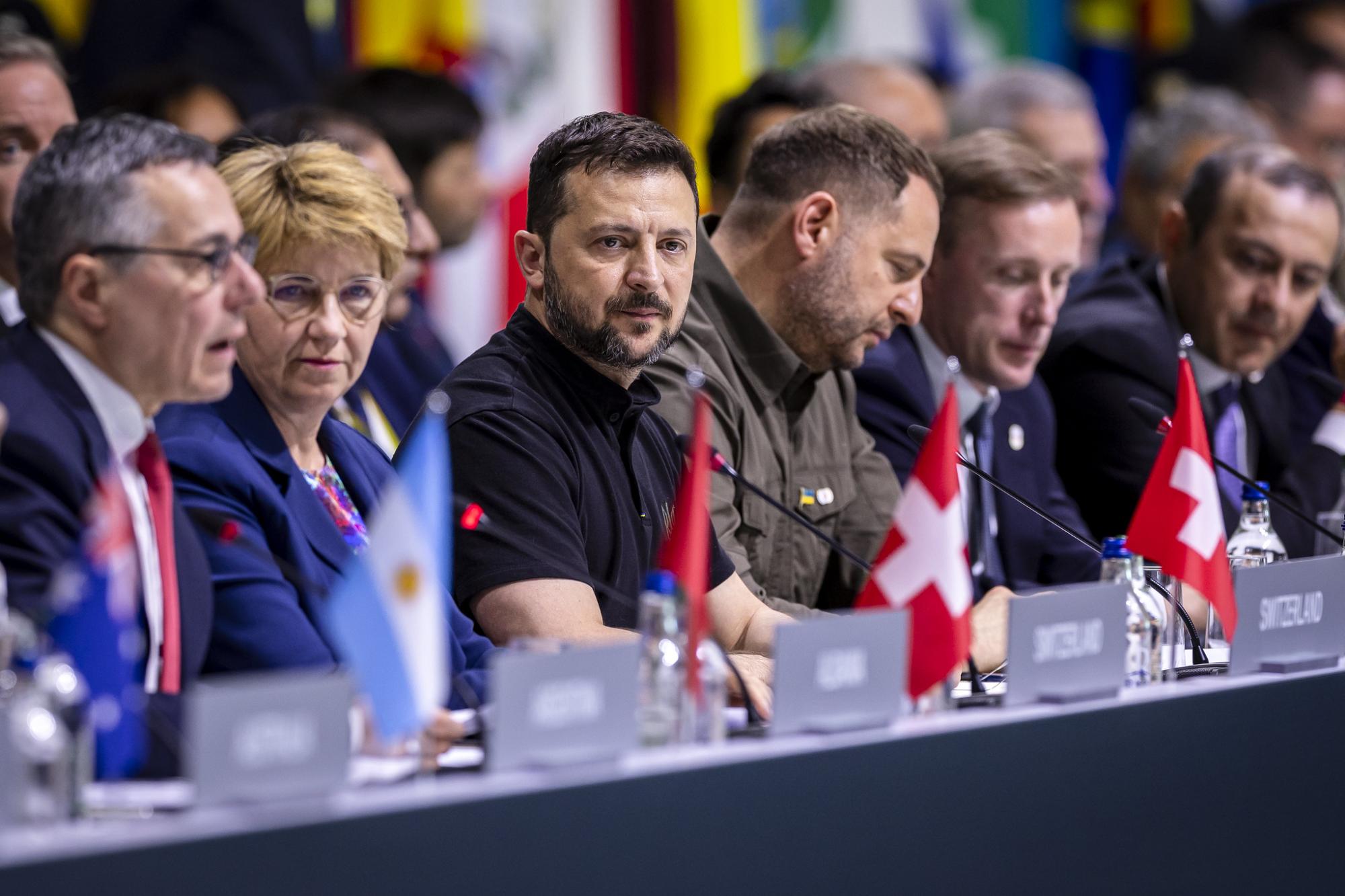
The second Peace Summit is expected to take place by the end of the year, but it is unlikely that preparations will be completed in time (photo flickr.com eda_dfae).
Three meetings of working subgroups are needed to develop the plan. The first—on energy security—took place online last Friday. Conferences in Türkiye and Canada will be dedicated to food security and the exchange of prisoners. After that, Ukraine hopes to present a finalized plan at the summit and gain worldwide approval.
Participants of the meeting in Switzerland insist that Russia should be represented at the second summit. According to Yermak, this is entirely possible, and they do intend to hand over the plan to a Russian representative. However, this does not mean the start of peace negotiations. It's important to note that Moscow refused to participate even before the Ukrainian offensive in the Kursk region, and now it constantly talks about the impossibility of any negotiations.
Peace summits are an unacceptable scenario for Russia because they undermine the Russian strategy of the negotiation process. Russians see them as foreign platforms where they will be pressured to partially agree to Ukrainian terms. Therefore, it is highly likely that Russia will ignore the second summit as well. "The only possible exception is if China decides to participate and convinces Russia that it should do the same," Fesenko emphasizes.
Another important point is that the summit is not about negotiations. It can lay the foundation for a peace process. Real negotiations are not conducted publicly in the presence of dozens of countries. As The Washington Post writes, a secret meeting was planned in Qatar in August with representatives from Ukraine and Russia to reach an agreement on mutual non-attacks on energy facilities.
"This was an attempt to start informal negotiations. Something similar could theoretically happen at the second Peace Summit. Proposals for advancing the peace process could be discussed, then passed on to Russia, which could consider them without participating in the summit. Or they could attempt to agree on where, when, and how to start negotiations. But this is an ideal scenario," explains the political scientist.
It is too early to hope for real peace negotiations. The situation on the front and the geopolitical environment have not yet aligned in a way that allows for the war to end with a just peace. Russia is not ready to discuss peace and speaks in the language of ultimatums, which forces Ukraine to act asymmetrically and "flip the chessboard" with operations in the Kursk region.
"I am convinced that for any negotiations to start, first, the US election must be over because the Russians want to negotiate with the Americans. Second, the military situation must stabilize. Because as long as Russia has a certain advantage, there will be expectations that the war can be won. Once the situation on the front stabilizes and it becomes clear that neither side can win the war, negotiations will have to take place," Fesenko concluded.
Sources: statements from Ukrainian officials, publications from Western media, and exclusive comments from military, financial, and political experts for RBC-Ukraine.
